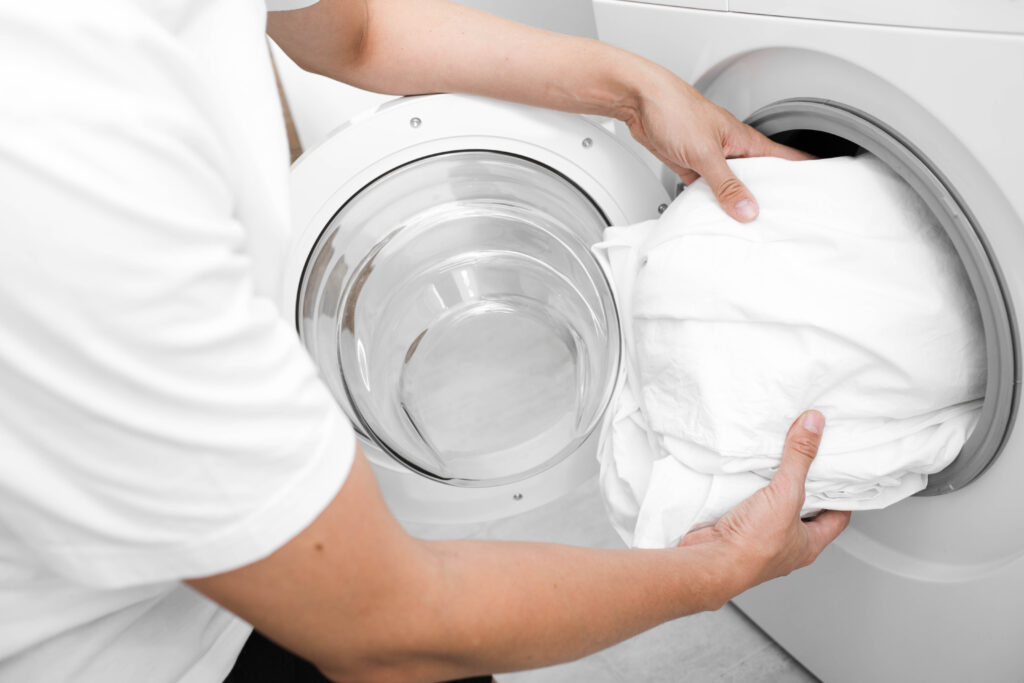
Do You Know How Often You Should Wash Pillows & Bedding?
Do you wash your sheets and pillows enough? Probably not. Do you know how often to wash bedding or how often you should clean your sheets? If not, don’t worry, you’re not alone.
In just a short amount of time, sheets and pillows become covered with various bodily secretions, oils from the skin, sweat, saliva, and dead skin cells, along with bacteria, fungi, pollen, and pet dander. If not washed regularly, this build-up can become a dust mite paradise. Although those little critters are too tiny to see with the naked eye, you can bet they’re taking up refuge in your bed and midnight snacking on your dead skin flakes. Not to mention, many people are allergic to dust mites and their feces (yep, dust mite poo is in your bed too), which makes regular washing of your bedding that much more critical.
How Often You Should Clean Your Sheets
In a 2012 poll by the National Sleep Foundation, researchers found that 91 percent of people change out their sheets every other week. While this is a common rule of thumb, most experts suggest weekly washings instead.
Healthline shared some helpful factors that warrant how often you should clean your sheets, stating you should wash your sheets more often if:
- You have asthma or allergies and are sensitive to dust
- You have a lesion or infection that makes contact with your sheets/ pillows
- You sweat excessively overnight
- Your pet sleeps in your bed
- You eat in bed
- You go to bed without showering
- You sleep naked
How Often Should You Wash Pillows?
Just like sheets, pillows harbor a lot of icky things like dirt, saliva, oils, sweat, bacteria, mold, makeup residue, and fungi, and these only build up more and more over time.
Consumer Reports experts say you should fluff your pillow daily but wash it only occasionally, and they provided three simple steps for keeping your pillow fresh, clean, and ready for a great night’s sleep.
- Air It Out – Fluffing your pillows daily can help restore their shape and eliminate dust. Get into the monthly habit of hanging them outdoors in the fresh air, ideally on a breezy day. However, if that is not plausible, try running them through the dryer on the no-heat cycle.
- Wash Gently – Unless your pillow is marked as “dry clean only,” you should get in the habit of washing your pillows at least twice a year following the care instructions on the label. If your washing machine is large enough, clean several pillows at a time to help balance the load and to allow the water and detergent to circulate more effectively. Pop over to A Clean Bee for more detailed directions as they vary by specific types of pillow fills.
- Dry Thoroughly – While laundering a pillow isn’t difficult, drying it can be tedious. It’s crucial that you get the pillow completely dry. Otherwise, you run the risk of developing mildew. However, when you use the auto-dry setting on your dryer, the sensors only detect surface moisture and will shut off prematurely, leaving you with a pillow still damp on the inside. Instead, most pillows fare well after an hour on moderate heat. Throw in some towels or other linens to help speed up the drying process. For down or feather pillows, use the no-heat air-dry setting but prepare for a longer wait time. Additionally, if weather permits, you can hang most pillows out on a clothesline until fully dried.
Insider Tip: Throw in a couple of tennis balls or dryer balls to help keep the pillow filling from clumping as it bounces around the dryer drum.
When to Replace Pillows
Wondering when to replace pillows? A good, general rule of thumb is once every 1-2 years. It may be hard to part with your favorite, but pillows aren’t meant to last forever. You’ll know it’s time to replace your pillows when they no longer provide enough support.
Washing frequently can prolong their life, but ultimately, there is a limit to how long they can support you. By replacing your pillows as recommended, you can prevent pain, reduce allergies and promote overall hygiene. Otherwise, keeping your pillows much longer than 1-2 years can affect your health and cause unwanted sleep disruptions.
Signs to Know When to Replace Pillows:
- You frequently wake up with neck pain
- Your shoulder or neck muscles feel cramped in the morning
- You have trouble sleeping due to headaches
- You experience allergy symptoms (itchy throat, watery eyes, runny nose, breathing difficulties)
- You notice yellow stains or spots despite regularly washing
- Your pillow feels lumpy
- Your pillow becomes flat
- Your pillows easily fold in half
If you’re in the habit of washing bi-weekly, consider investing in another set of sheets so you can switch out weekly rather than go through the trouble of more frequent washing. Additionally, using protective covers and following the label instructions can aid in prolonging your pillow’s life. In the meantime, keep sheets clean between washings by avoiding applying lotions, creams, or oils before bed, showering before bed, keeping pets off the bed, removing makeup before you sleep, limiting eating and drinking in bed, and avoiding naps after a sweaty exercise.
Just a little diligence when it comes to preserving your pillows and sheets can go a long way in helping you sleep and breathe much better through the night.

